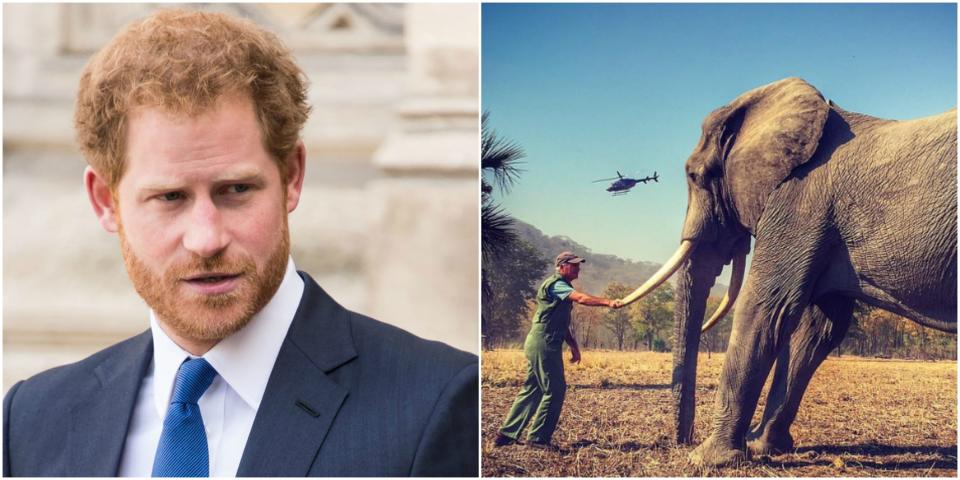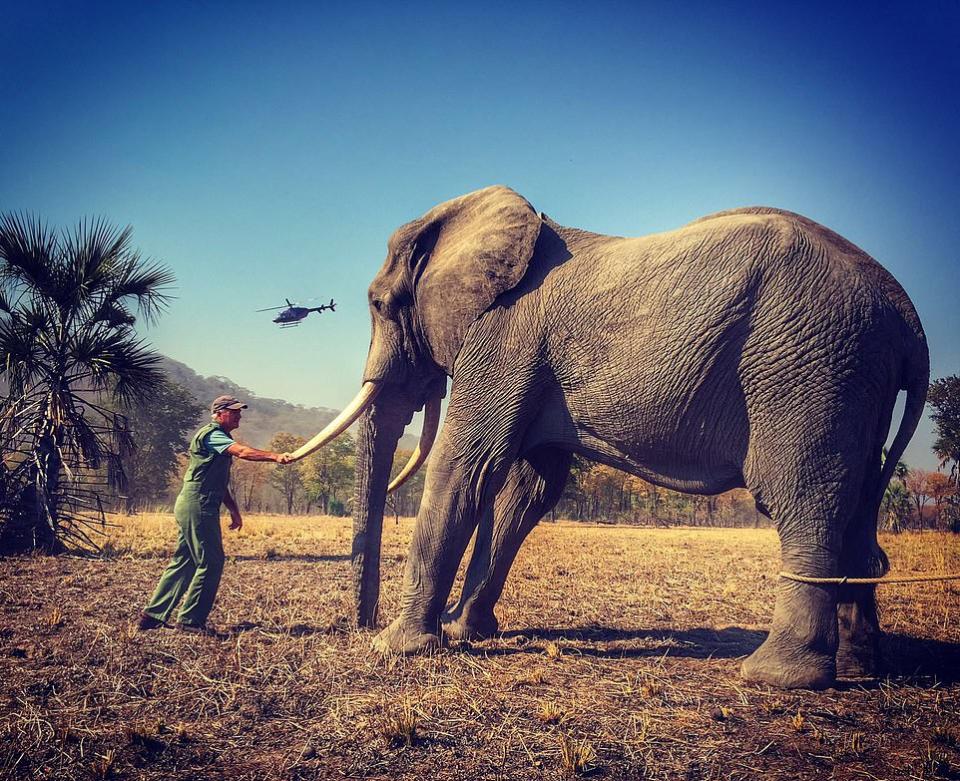The cruel reality behind Prince Harry's wildlife photography

Prince Harry stunned the world last week with the release of his never-before-seen wildlife snaps taken during far-flung travels around the globe.
But now the reality behind the duke’s photography has been revealed, with a simple crop masking what led up to Harry snapping the now-famous images, shot in the African bush.
One picture, taken just metres from a wild elephant’s trunk, left many royal watchers enthralled at the prince’s brave proximity to the imposing animal.
But The Mail on Sunday reported the creature had actually been stunned by a tranquilliser for the duration Harry was in its presence.
In fact, the publication claims each of the animals – a rhino, elephant and lion – which were posted on the Sussex’s Instagram had been transquilised and restrained before he even came close.

The majestic African elephant’s hind legs had also been restrained by a rope – a reality which was hidden from followers due to the way the picture was cropped before being uploaded as part of an Earth Day tribute.
Each of the snaps were taken in Malawi in mid-2016, just weeks after Harry and Meghan’s romantic trip to neighbouring Botswana where they say they first fell in love.
“We were in a floodplain… I have a series of images – from a different perspective – depicting the elephant falling to the ground later on,” field guide Frank Weitzer, who was present when the pictures were taken, told the Mail.
A spokesman for the duke refused to discuss the allegations with the publication but instead claimed the choice of cropping was ‘due to Instagram’s format’.
A post shared by The Duke and Duchess of Sussex (@sussexroyal) on Apr 22, 2019 at 6:54am PDT
The shock revelation follows reports last week that Harry and Meghan’s apparent close ties to the African continent could see them posted there on a multi-year royal assignment in the region.
Among these ties are the gap year Harry spent in Lesotho in 2004, a World Vision trip Meghan took to Rwanda in 2016 and their now-famous trip to Botswana love was first sparked.
Got a story tip? Send it to lifestyle.tips@verizonmedia.com
Want more lifestyle and celebrity news? Follow Yahoo Lifestyle on Facebook, Twitter and Instagram.
Or sign up to our daily newsletter here.

 Yahoo Lifestyle
Yahoo Lifestyle 
